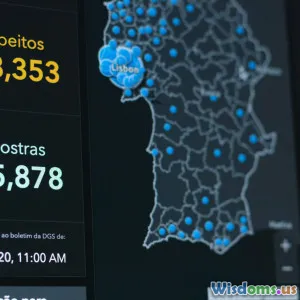
Are Victimology Profiles Helping Investigators Catch Criminals Faster
8 min read Explore how victimology profiles accelerate criminal investigations by unveiling crucial insights about victims and aiding faster offender identification. (0 Reviews)
Are Victimology Profiles Helping Investigators Catch Criminals Faster?
Criminal investigations have evolved significantly over the decades. Among the innovative tools emerging within the field of criminology is victimology profiling — the strategic analysis of victims’ characteristics, behaviors, and circumstances to better understand the dynamics of crimes committed against them. This approach has been gaining increasing traction, promising to transform how investigators narrow down suspects and understand criminal motives quicker than before.
In this article, we explore the fascinating world of victimology profiling, examine its impact on speeding up investigations, and consider case studies that highlight its practical benefits.
What is Victimology Profiling?
Victimology is the scientific study of crime victims, focusing on understanding how various factors contribute to victimization. Victimology profiling involves creating comprehensive psychological, social, and situational profiles of victims to provide critical clues to investigators.
Unlike traditional criminal profiling that concentrates on the offender, victimology shifts attention to the victim—their lifestyle, routines, vulnerabilities, and relationship to the suspect. This victim-centered perspective helps uncover latent patterns that can yield insights into the type of criminal responsible, their modus operandi, and potential motives.
Components of Victimology Profiles
- Demographic Data: Age, gender, occupation, lifestyle choices
- Behavioral Patterns: Daily habits, social interactions, and routines
- Victim-Offender Relationship: Previous conflicts, acquaintanceship status
- Risk Factors: Vulnerabilities that increased victimization chances (e.g., location, time, societal context)
By integrating these factors, investigators can generate hypotheses about offender characteristics—a process shown in multiple investigative successes.
How Victimology Accelerates Investigations
1. Narrowing Down Suspect Pools
When victim profiles reveal specific habitual behaviors or social circles, investigators can focus resources on more probable suspect groups. For instance, if a victim frequently met certain individuals at particular locations, these details funnel suspect lists effectively. This avoids broad, time-consuming searches.
Example: In the 2015 investigation of the “Brisbane Strangler” case, analyzing victims’ use of certain fitness clubs led detectives to focus on gym staff and associates. This victim profile aspect directly contributed to earlier identification of the perpetrator.
2. Understanding Victim Selection Criteria
Profiling helps decode why certain victims are targeted over others. Many criminals choose victims based on accessibility, vulnerability, or symbolic reasons. Knowing these criteria guides investigators toward understanding offender behavior.
Data Insight: A study published in the Journal of Criminal Psychology (2019) analyzing 200 residential burglary cases found that victim behaviors, such as leaving homes unattended for long periods, correlated strongly with offender targeting, which helped police anticipate potential risk zones.
3. Identifying Crime Patterns and Serial Offending
When multiple victims share similar profiles, this can indicate a serial pattern. Victimology assists in linking disparate cases by highlighting victimology similarities overlooked initially.
For example, the FBI’s Behavioral Analysis Unit routinely integrates victimology into its serial killer investigations, attributing this approach to quicker linkages among victims, enabling earlier warnings for public safety.
4. Supporting Victim Advocacy and Improving Reporting
Better victim understanding not only speeds criminal capture but also informs sensitive communication strategies, encouraging victims to come forward with useful information that accelerates investigations.
Real-World Success: Victimology in Action
Case Study: The Green River Killer
One of the most chilling serial offenses in U.S. history, the Green River Killer targeted primarily sex workers in Washington State over nearly two decades. Initially, fragmented victim data hampered investigations, but when victimology was applied, investigators grouped victims by occupational status, departure points, and vulnerabilities. This enabled patterns to emerge that eventually directed police toward Gary Ridgway.
The detailed victim profiling played a pivotal role—even influencing the development of strategies to reduce victim risk before the killer’s apprehension.
Case Study: The Yorkshire Ripper
British police investigating the Yorkshire Ripper murders faced numerous dead ends until they focused on victim profiles. Recognizing that victims were women of certain lifestyles led authorities to alter patrol strategies and investigation approaches, reducing casualties and tightening manhunt efforts.
Challenges and Controversies
Despite clear benefits, victimology profiling is not without critique:
- Risk of Victim Blaming: Emphasizing victim behaviors can unintentionally imply responsibility, necessitating sensitive application.
- Complex Data Integration: Effective profiling requires multidisciplinary expertise—criminology, psychology, sociology—which not all departments possess.
- Privacy Concerns: Gathering extensive victim data raises ethical concerns about consent and data handling.
Experts emphasize the need for rigorous training and ethical guidelines to harness victimology properly.
The Future of Victimology in Criminal Investigations
With advances in data analytics, artificial intelligence, and behavioral science, victimology profiling is set to become even more precise and instrumental.
Innovative technologies such as machine learning algorithms can analyze vast datasets across multiple crimes, identifying victim patterns humans might miss. Collaboration between forensic experts, psychologists, and data scientists enhances the multidisciplinary approach necessary for refined profiling.
Furthermore, community engagement and victim support programs empowered by victimological insights foster environments where crimes are reported earlier and investigative outcomes improve.
Conclusion
Victimology profiles undeniably offer law enforcement a powerful lens through which to understand crimes more deeply. By centering investigations on victim characteristics, behaviors, and risk factors, criminal detectives dramatically reduce the scope and complexity of suspect identification.
Real-world successes, such as in the Green River Killer case, underscore the tangible impact of victim-centeredAnalyses. However, ethical considerations must guide the continued integration of victimology into criminology.
Ultimately, as our scientific and technological capabilities evolve, victimology profiling will likely become a cornerstone for accelerating justice — delivering swifter resolutions and enhancing public safety worldwide.
Do you want to learn more about crime-solving techniques and forensic innovations? Stay curious and informed, as every insight could bring us closer to safer communities.
Rate the Post
User Reviews
Other posts in Forensic Science
Popular Posts


















